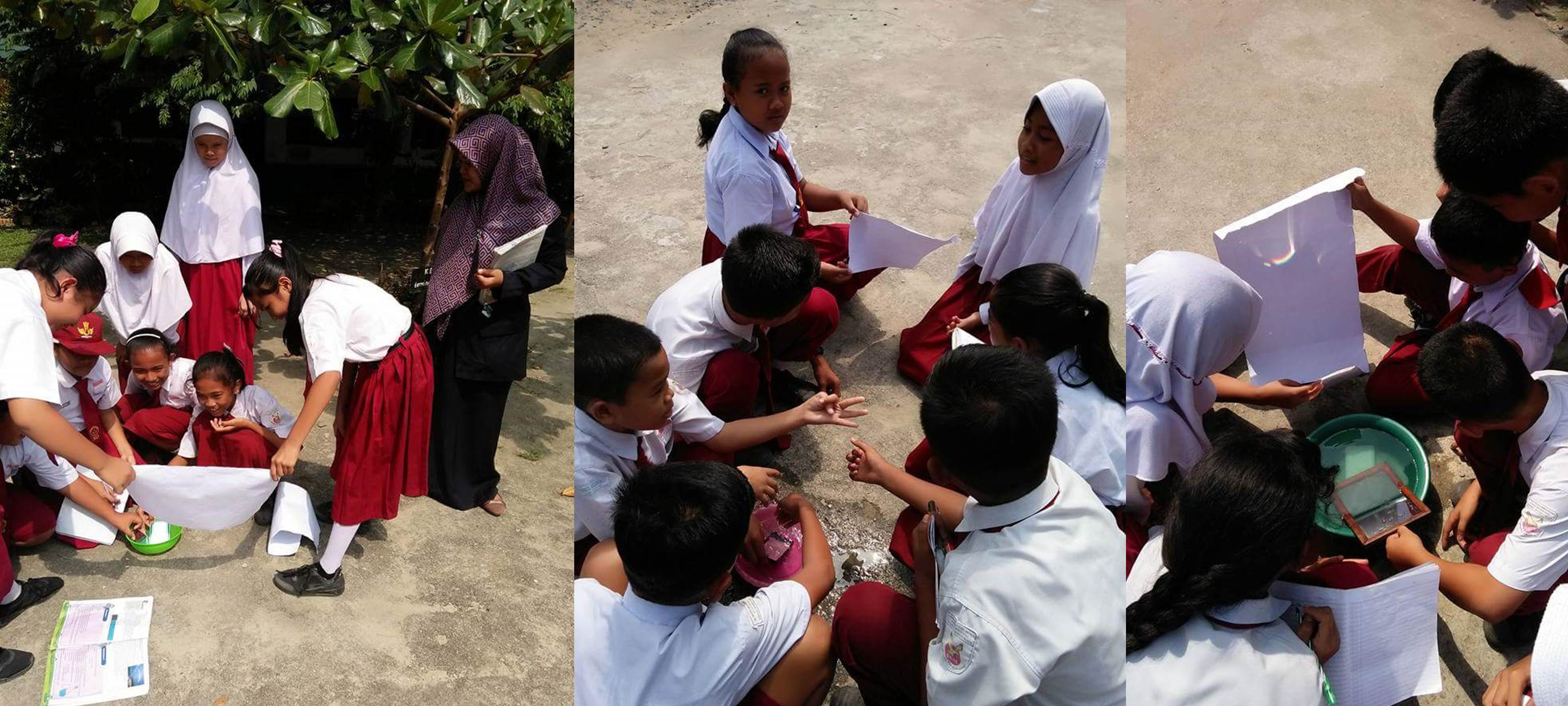Breaking Down Light into a Rainbow

Precisely on Tuesday, February 20, 2018, Rianti, Grade V Teacher of SD (Private Elementary School) RGM Blok Songo, Kota Pinang, North Sumatra invited her students to undertake an experiment on how to break down white light into a rainbow. At the beginning of the lesson, Bu Rianti gave cards containing names of groups and each of the student searched for his/her group.
After the students formed groups, each comprising six persons, Bu Rianti explained to the students that they were going to learn how the material properties of light can be broken down into seven colors of the rainbow through an experiment activity.
Tools and materials given to students comprised flat mirrors, basins as water containers, and white cardboards. Bu Rianti led the students to the school ground that was exposed to direct sunlight. Before the experiment began, she invited the students to sing a rainbow song to make them more enthusiastic.
Then, each group was asked to fill the available basins with water. Bu Rianti guided the students to undertake the experiment by paying attention to her instructions.
“Insert the mirror into the water basin with the position of the group members facing the direction of the sun. See the refraction of the light into a rainbow from the reflection of the mirror onto the white paper in front of you, “said Bu Rianti.
The groups that have completed the experiment were then asked to observe the refracted light reflections into a rainbow and to note the resulting rainbow colors. Bu Rianti accompanied each group and assisted the students in conducting the experiment. Some groups have already been able to find the colors arranged in the rainbow. Oher groups that still encountered difficulty were guided by her to find the colors
“Yes, that is fine, children. You have already done an experiment on the occurrence process of the rainbow. In nature, rainbows occur due to the refraction of the light. So the sunlight that passes through the rain drops will be refracted through the rain drops, “said Bu Rianti.
Well, this refracting process that separates white light into spectral colors such as merah, jingga, kuning, hijau, biru, nila, ungu (red, orange, yellow, green, blue, indigo, purple) or abbreviated as mejikuhibiniu. Then the colors bounce behind the rain drops, which consequently causes the light to appear as curves into a rainbow,” she continued explaining.
After that all of the students returned to the classroom. Then each group was assigned to make a report of the results of the experiment conducted. After completing the experiment reports, Bu Rianti gave the students the opportunity to present the results of their experiment.
“A rainbow occurred when the sunlight that entered the water was reflected by a mirror onto a white paper so that the reflected light formed rainbow colors. The colors we saw were red, orange, yellow, green, blue, indigo and, purple,” so went the presentation of one of the group representatives. Other groups were also given the opportunity to do their presentations. Their presentations were similar to that of the first group.
From the students’ reports and presentations, it appears that the students were able to understand the refracting process of the white light into seven colors of the rainbow. They also claimed that they enjoyed learning Natural Sciences by way of direct practices.
“Before participating in Tanoto Foundation training, I mostly gave explanations about subject materials in front of the class, gave exercises, and assessed the students’ exam results. After having been mentored by Tanoto Foundation’s facilitators, I have many enjoyable models and learning methods for the students to make it easier for them to understand the subject materials taught, “said Bu Rianti.

Leave a Reply